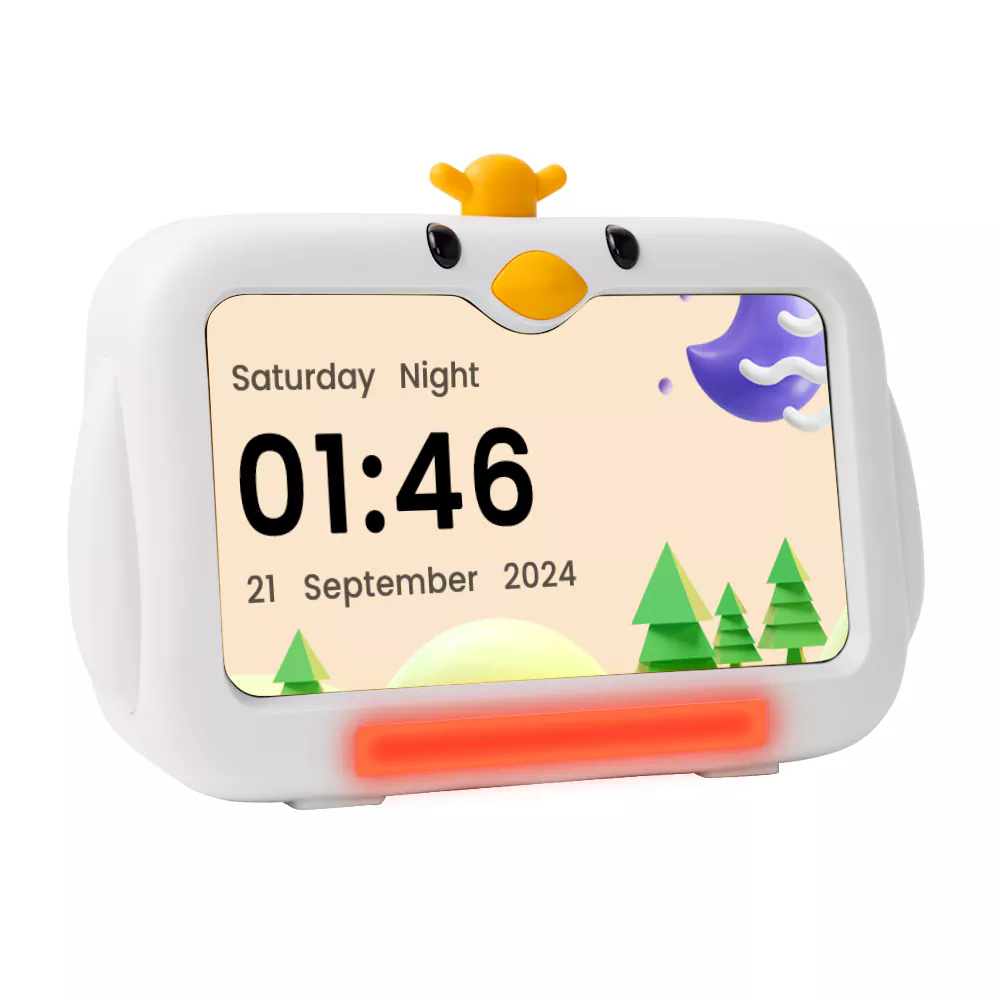Why Choose a Kids Clock
2025-08-27
In today’s fast-paced world, helping children understand the concept of time from an early age is essential. A kids clock isn’t just a decorative piece for your child’s room — it’s an educational tool that promotes cognitive development, builds healthy routines, and fosters independence.
Why a Kids Clock Is Essential for Your Child’s Development
Teaching children to tell time isn’t just about reading numbers on a dial — it’s about nurturing essential life skills. A kids clock is designed specifically with children’s learning patterns and visual perception in mind. Here are several compelling reasons why every parent should invest in one:
Promotes Cognitive and Time-Management Skills
Children develop a sense of structure and discipline when they can visually associate certain times with specific activities. For example:
-
Morning Routines: Wake-up times become easier to follow when paired with a colorful clock.
-
Bedtime Habits: Visual cues from a clock help kids transition smoothly from playtime to bedtime.
-
Homework Planning: Understanding how long tasks take fosters better time allocation and planning.
Encourages Independence and Responsibility
A well-designed kids clock allows children to manage simple tasks without constant parental reminders. By learning to track time on their own, they gain a sense of control over their daily routines — a valuable skill as they grow older.
Supports Early Education
Kids clocks are often designed with color-coded segments, large numbers, and fun visual elements to make learning intuitive and enjoyable. Children are naturally drawn to vibrant and playful designs, making time-telling a fun part of their early education.
Key Features to Look for in a Kids Clock
Choosing the right kids clock goes beyond picking a cute design. The perfect model should blend functionality, durability, and educational value to suit your child’s specific needs. Below is a breakdown of essential features to consider:
| Feature | Description | Why It Matters |
|---|---|---|
| Design & Colors | Bright, playful designs with engaging themes | Keeps children visually stimulated and interested |
| Readable Numbers | Large, clear digits or well-marked analog faces | Makes learning time easier for beginners |
| Material Quality | Non-toxic, eco-friendly materials like BPA-free plastic or safe wood | Ensures safety and longevity |
| Durability | Shock-resistant frames and sturdy construction | Protects against accidental falls or rough handling |
| Silent Mechanism | No-ticking movement for quiet operation | Supports undisturbed sleep and concentration |
| Educational Functions | Color coding, labeled minutes, and activity indicators | Simplifies time-telling and encourages learning |
| Alarm Options | Gentle wake-up alarms, melodies, or vibration | Helps kids develop wake-up habits without stress |
| Power Source | Battery-operated or USB-rechargeable | Offers flexibility for placement and portability |
By focusing on these factors, you ensure that the kids clock is not just attractive but also functional and educational.
How to Choose the Perfect Kids Clock for Your Child
The best kids clock depends on your child’s age, learning style, and daily routine. Below are key considerations when making your choice:
Consider Age and Learning Stage
-
Toddlers (2-4 years): Look for visual cues like colors, shapes, and cartoon characters.
-
Preschoolers (4-6 years): Analog clocks with labeled numbers and minute marks are ideal for learning basics.
-
School-Age Kids (6+ years): Opt for multifunctional clocks with alarms, timers, and educational features.
Match the Clock to Your Child’s Room
A kids clock doubles as decor. Choose a design that complements your child’s bedroom theme while still providing functional learning value.
Evaluate Safety Standards
Ensure the materials are non-toxic and meet international safety certifications. Avoid clocks with small detachable parts that could pose a choking hazard for younger children.
Prioritize Silent and Gentle Features
Children are sensitive to sound while sleeping. Silent sweep mechanisms and soft alarm tones prevent sleep disturbances and encourage healthier rest cycles.
Balance Functionality and Aesthetics
Some kids clocks come with night lights, interactive storytelling modes, or multi-color LED displays. While these features are attractive, ensure they don’t distract from the main purpose — learning time and managing routines.
FAQs: Kids Clock Common Questions Answered
Q. What type of kids clock is better — analog or digital?
A1: Analog clocks are generally better for teaching younger children how to read time since they provide a visual representation of the passage of time. Digital clocks are more convenient for older kids who need precise timekeeping, especially for school schedules or alarm use. Ideally, start with an analog clock for foundational learning and introduce a digital clock later for functionality.
Repetition through routines reinforces time recognition naturally.
Choosing the right kids clock is about more than just aesthetics; it’s about nurturing essential life skills like time management, responsibility, and independence. From selecting a safe and durable design to incorporating educational features that make learning enjoyable, a well-chosen kids clock can have a lasting impact on your child’s development.
At Preation, we understand the importance of balancing style, functionality, and education when designing our kids clocks. Our products are crafted with child-friendly materials, innovative teaching features, and durable designs to help parents guide their children toward better time awareness and daily routines.
If you’d like to explore our latest collection or need personalized recommendations, contact us today and let us help you find the perfect kids clock for your family.
 English
English שפה עברית
שפה עברית беларускі
беларускі Punjabi
Punjabi Español
Español Português
Português русский
русский Français
Français 日本語
日本語 Deutsch
Deutsch Italiano
Italiano Nederlands
Nederlands 한국어
한국어 Malay
Malay हिन्दी
हिन्दी Türkçe
Türkçe العربية
العربية Indonesia
Indonesia Română
Română Srpski језик
Srpski језик



